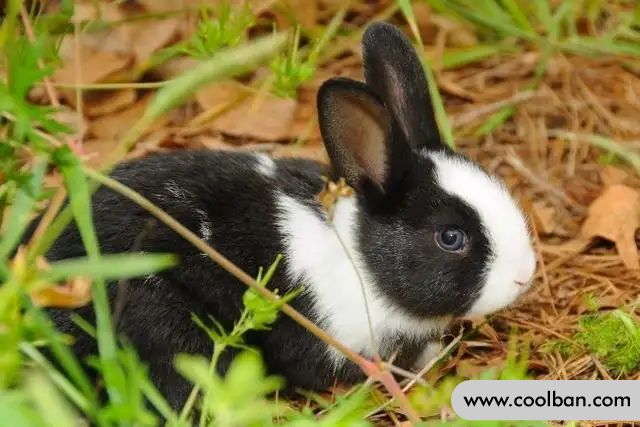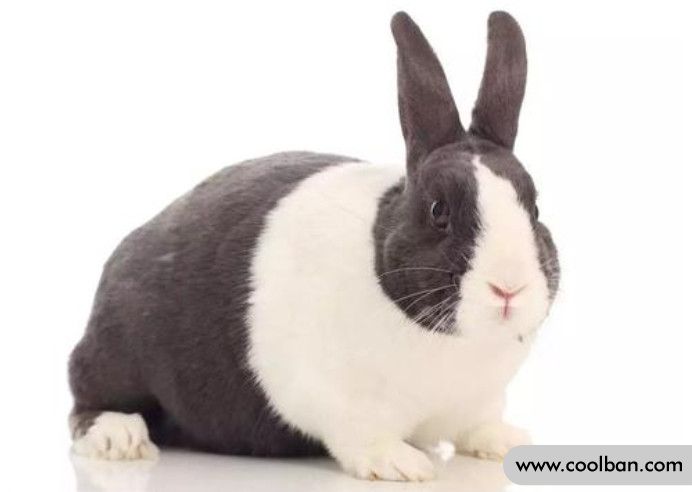How to raise Dutch rabbits
The face of the Dutch rabbit has a V-shaped white block that extends down to the chin. The body is small, the ears are relatively short, the nose and neck to the front feet are white, the other parts are black, blue, chocolate, gray, copper iron and other colors. Currently, there are about a dozen colors.
Breeding environment of Dutch rabbits
1. Requirements for the breeding environment of Dutch rabbits
Dutch rabbits are very delicate animals. They are not only afraid of cold and heat, but also of humidity. Therefore, special attention should be paid to the arrangement of the rabbit nest. The optimum temperature for Dutch rabbits is 25-32°C and humidity is 40-60%. The environment of the breeding box should be kept dry, with suitable temperature and good ventilation. Commercially available squirrel cages, large bird cages, and cat cages can be used for Dutch rabbits. A cage made of metal is best.

2. Requirements for Dutch Rabbit Breeding Cages
Wire mesh can be used on the sides of the enclosure to ensure good ventilation. When conditions permit, the cage should be as large as possible to ensure that the Dutch rabbit has enough room to move, so as not to grow too fat. Dutch rabbits are intolerant of heat and humidity. Care should be taken not to place the cage in a hot room, to not expose it to sunlight, or to expose the Dutch rabbit to rain. Newborn rabbits are prone to colds, so it's best to place a soft cloth around the cage and try to keep the cage in a warm place indoors.
When the weather is hot in summer, you need to prepare an electric fan for it to avoid heat stroke. It is best to cover the cage with clothes, blankets, etc. in winter, and prepare a light bulb to keep warm. But be careful where the bulb is positioned so that the rabbit doesn't bite the wire and get burned.
Wood bran is used to absorb urine. In order to prevent the fluffy rabbit fur from standing up around, remember to change it frequently, otherwise rabbits are prone to skin diseases, such as toe hair loss, calluses, etc. It is best to put wood chaff on the bunny toilet. To toilet train him, it's best to hold him in the toilet as soon as he poops, so he'll know where he's "convenient" later.

Dutch rabbit breeding points
Dutch rabbits have very fragile intestines. This is a species that has no choice when it comes to food. If you keep feeding him drumsticks, he'll be happy too, but rabbits are herbivores after all, and eating too much can cause intestinal damage. Therefore, as the owner, the rabbit should be guided to eat normal food.
1. Selection of Dutch Rabbit Food
Grass is a staple food for Dutch rabbits. Timothy is suitable for Dutch rabbits over 1 month old, especially adult rabbits whose main diet is grass. Low protein and high fiber can prevent the occurrence of various diseases. Alfalfa can be eaten by juvenile and pregnant rabbits. Too nutritious for adult rabbits to eat. Overnutrition can easily lead to obesity or indigestion. Others include plantain, dandelion, alfalfa, fruit tree grass, ryegrass, oat grass, wheat grass, etc., depending on the feeding situation of Dutch rabbits. Basically, the purpose of providing hay is to help Dutch rabbits grind their teeth, increase fiber and promote bowel movements.
2. Selection of snacks for Dutch rabbits
Young rabbits cannot eat fresh vegetables and fruits. Adult rabbits whose main food is grass and rabbit food can add a little vegetable to their daily diet, accounting for 5% of their daily diet. Fruits with too much sugar can lead to tooth decay and pustules in Dutch rabbits, so try to eat as little fruit as possible. Young rabbits are not allowed to eat, the peel can be eaten in moderation.

Feeding precautions for Dutch rabbits
1. Foods that cannot be eaten in large quantities: corn, peanuts, potatoes, flour foods, nuts, meat, honey, glucose, oatmeal, sweet bamboo sticks, etc.
2. Foods that cannot be eaten: chocolate, coffee, wine, onions, leeks, green onions, garlic, etc.
3. Dutch rabbits should try to eat less fruits and vegetables. The gastrointestinal and digestive characteristics of Dutch rabbits make them unsuitable for digesting excess carbohydrates! Too many fruits and vegetables can easily cause gastrointestinal distress in Dutch rabbits. Especially in young rabbits, eating fruits and vegetables too early can easily cause gastrointestinal discomfort and diarrhea. Adult Dutch rabbits should not eat more than 300 grams of fruits and vegetables per day. Different Dutch rabbits will have feces after eating. If there are any changes, adjust food intake based on your Dutch rabbit's physical condition. If there is any abnormality, you should stop feeding fruits and vegetables immediately.
